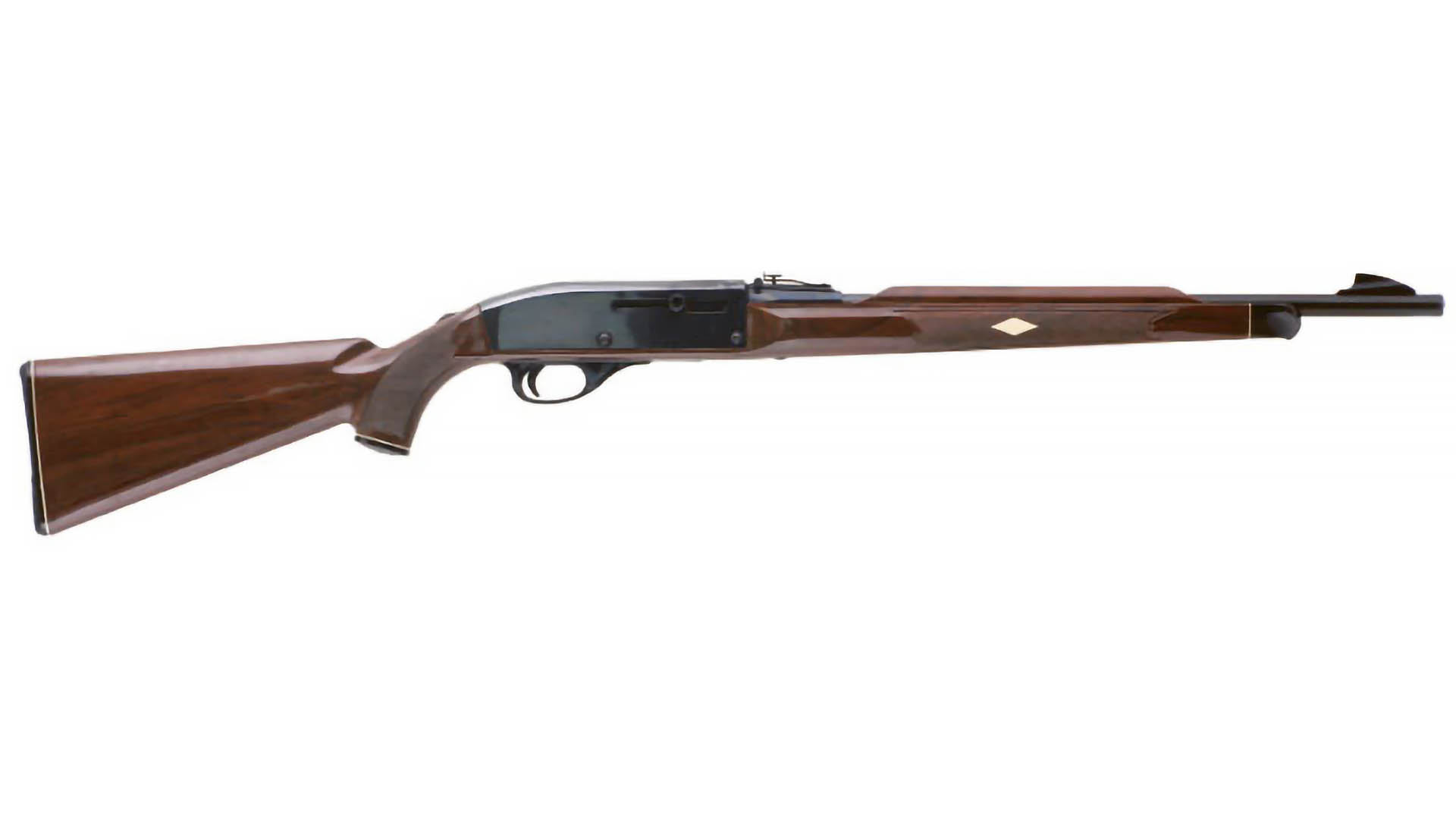Thanks to all for the great "Welcome" messages! I'll try not to clutter up the Ruger forum with too many questions about my Nylon 66!
That being said, I am trying to find out as much information as possible about my rifle. I have been able to find a lot of info on the internet that others have very generously shared, but I have run out of new sources. Based on what I've found so far, here's what I know:
The rifle is a Remington Nylon 66 in Mohawk Brown. The markings / stampings on the barrel are as follows (all visible without removing the metal receiver cover): just in front of the rear sight (with the muzzle facing to the left) is "PAT. PEND.", over "Remington" (stylized, but not within an oval), over "22 L.R. ONLY", and then the last line is the letters "B", "N" and the number "5".
On the right side of the barrel, near the edge of the receiver cover and just above the edge if the stock assembly is a small rectangular box, with a diagonal line from the bottom left corner going up to the top right corner.
I cannot find any other numbers or markings anywhere on the rifle.
From what I've found elsewhere on the internet, Remington used a date code of letters in the Month / Year format; in this case the letter "B" denotes January and the letter "N" denotes 1966. What I can't figure out is the solitary number "5".
I removed the metal receiver cover, but found no other markings. The barrel is exposed for 3 and 3/4 inches before it is enclosed by the fore-end of the stock assembly, but there are no markings / serial numbers there either.
This rifle has been in my family for a long time, but unfortunately I do not know it's full history. I am hoping someone can help me find out more information. What does the "5" mean? Or the box with the diagonal line? Could this be one of the rifles produced prior to the Gun Control Act of 1968 that had no serial number? I know that Remington's patent for this rifle was granted in 1958, so why the "PAT. PEND." stamp if it was produced in 1966?
These are things I can't find any information about, and I would greatly appreciate any and all help.
Thanks in advance!
That being said, I am trying to find out as much information as possible about my rifle. I have been able to find a lot of info on the internet that others have very generously shared, but I have run out of new sources. Based on what I've found so far, here's what I know:
The rifle is a Remington Nylon 66 in Mohawk Brown. The markings / stampings on the barrel are as follows (all visible without removing the metal receiver cover): just in front of the rear sight (with the muzzle facing to the left) is "PAT. PEND.", over "Remington" (stylized, but not within an oval), over "22 L.R. ONLY", and then the last line is the letters "B", "N" and the number "5".
On the right side of the barrel, near the edge of the receiver cover and just above the edge if the stock assembly is a small rectangular box, with a diagonal line from the bottom left corner going up to the top right corner.
I cannot find any other numbers or markings anywhere on the rifle.
From what I've found elsewhere on the internet, Remington used a date code of letters in the Month / Year format; in this case the letter "B" denotes January and the letter "N" denotes 1966. What I can't figure out is the solitary number "5".
I removed the metal receiver cover, but found no other markings. The barrel is exposed for 3 and 3/4 inches before it is enclosed by the fore-end of the stock assembly, but there are no markings / serial numbers there either.
This rifle has been in my family for a long time, but unfortunately I do not know it's full history. I am hoping someone can help me find out more information. What does the "5" mean? Or the box with the diagonal line? Could this be one of the rifles produced prior to the Gun Control Act of 1968 that had no serial number? I know that Remington's patent for this rifle was granted in 1958, so why the "PAT. PEND." stamp if it was produced in 1966?
These are things I can't find any information about, and I would greatly appreciate any and all help.
Thanks in advance!





